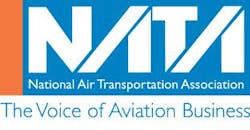What is the purpose of a tax? To raise revenue for the government you say? Well, that is only part of its purpose. In addition to taxes being a source of revenue, they are, as anyone who has claimed a credit for installing energy efficient appliances or windows is aware, also used to control behavior. Taxing something affects how much, or little, people use that something. The result of this year-after-year tinkering with the tax code to control behavior is a massive web of confusion that is now more than 16,000 pages long. (Those of you who found War and Peace a quick, enjoyable read can click here to download the entire tax code.)
Aviation has its fair share of contributions to this ridiculously massive volume of complex regulations, but none as silly as the so-called Fuel Fraud Tax. The fuel fraud tax was created with the passage of the Highway Bill in 2005 and was designed to prevent non-aviation users from cheating the tax code by buying jet fuel at airports for their diesel engines. Supposedly, farmers and over-the-road truck drivers were going to airports, buying jet fuel, mixing some type of oil with the jet fuel to increase its lubricity and then burning it in their trucks or farm equipment — all to avoid the 2.5-cent-per-gallon (CPG) higher tax on diesel fuel.
The fuel fraud tax, in an effort to fix this supposed large scale problem, required on-airport fuel vendors to pay the higher diesel tax when purchasing their jet fuel and offered a process whereby the vendor could receive a refund from the IRS of the 2.5-CPG difference between the higher diesel tax and the lower jet fuel tax. Unfortunately, getting this refund requires 1) registration as an “ultimate vendor,” a process that almost amounts to an IRS audit, 2) the collection and retention of signed affidavits from the operator of every commercial aircraft who purchases jet fuel from the ultimate, and, finally, 3) the regular submission of refund requests.
Sound confusing? Well, that’s not all; remember, this is the tax code! In addition to everything listed above, the fuel fraud tax also mandates that the taxes collected on jet fuel go into the Highway Trust Fund instead of the Airport and Airway Trust Fund. Only when a fuel vendor completes and submits an application for a refund of the 2.5-CPG that they were overcharged do the funds get moved back to the Airport and Airway Trust Fund. If there is no refund application, the money stays with the Highway Trust Fund.
Not surprisingly, this overly complex and unneeded rule has had unintended consequences. Due to the administrative costs involved in becoming an ultimate vendor, collecting affidavits and submitting regular refund requests to the IRS, many fuel vendors have chosen not to participate and to pass the 2.5-CPG higher tax rate on to their customers. The end result is that all of those taxes that were collected from aviation users remain in the Highway Trust Fund. A recent study estimated that $50 million per year that is collected from aviation is going to and remaining in the Highway Trust Fund due to the fuel fraud tax.
It’s time to end this confusing, unneeded and downright silly tax provision. No one has ever presented evidence of large scale fraud where jet fuel is being sold to truckers or farmers to avoid a less than 3-CPG tax. That activity is illegal, and if something like that did occur it could be prosecuted — without siphoning away $50 million in funds needed for airport safety, efficiency and development projects and imposing needless costs on FBOs and others who sell jet fuel. NATA is committed to seeing an end to the fuel fraud tax. If you sell jet fuel, own an aircraft, operate an airport or just believe that the taxes collected on aviation should remain within aviation, we ask you to join us in this fight by contacting your Members of Congress today to support inclusion of a provision in H.R. 7, the American Energy and Infrastructure Jobs Act.
Visit or return to the NATA site: www.nata.aero

